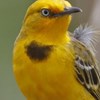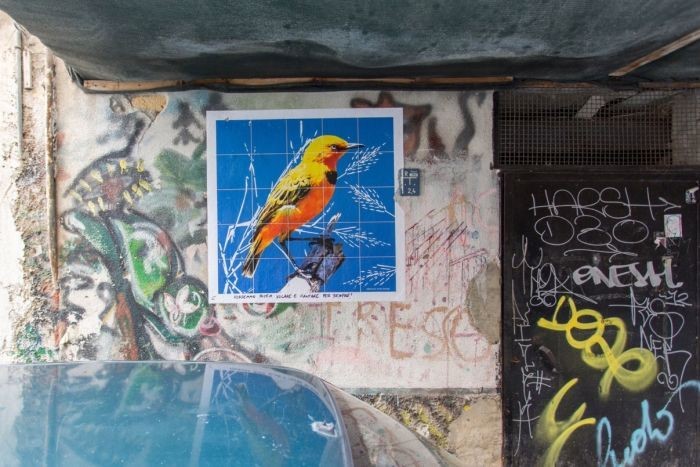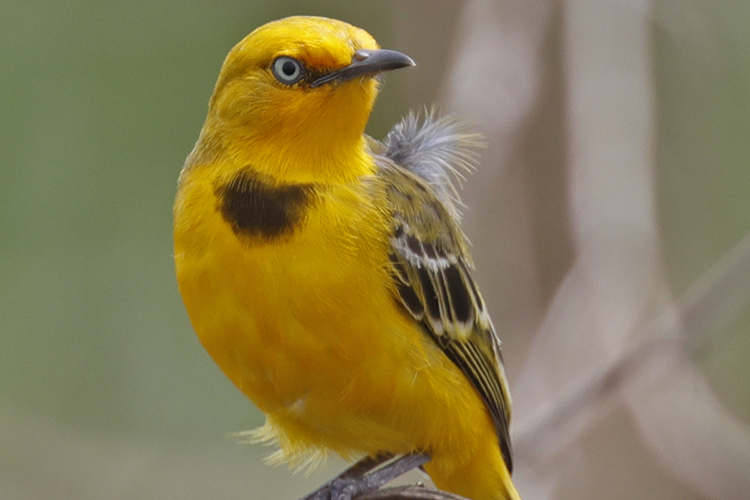
Kakadu collaboration for the yellow chat
Wednesday, 05 June 2019The Alligator Rivers yellow chat is a small, bright yellow insectivorous bird of the Kakadu floodplains. This Endangered species is imperilled by habitat changes caused by altered fire regimes, buffalo and feral pigs, rising sea levels and the spread of weeds like prickly mimosa and introduced grasses. What has been happening to degrade these floodplains has been equally of concern to Traditional Owners as to yellow chat researchers. Charles Darwin University PhD candidate Robin Leppitt is celebrating the completion of field work, and has news to share.
Survey sites and sacred places
I first obtained permission from the Traditional Owners, including Victor Cooper and Sean Nadji, to work on the Country. People had concerns about the invasive animals and weeds that were not only threatening the yellow chat but also damaging sacred places on the floodplains and making it harder to hunt for bush foods. Many of the survey sites are also important hunting and collecting sites. In response to their interest I collected additional data on these threats across the floodplains.
Roy and Harold are Traditional Owners from other parts of the Top End, but their wives are Alligator Rivers Traditional Owners. Working with them was really valuable to the project as it helped me access areas of the floodplain and also better understand local views about how the floodplains were used and how they should be managed. 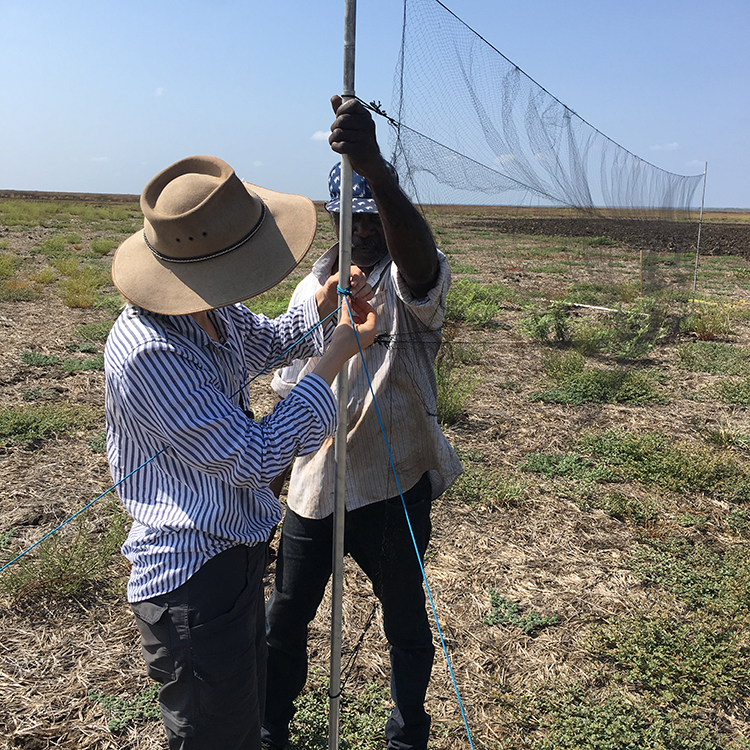
Donna Belder and Harold Goodman setting up a mist-net to catch chats for leg banding. Image: Robin Leppitt
Our findings
In addition to identifying the whereabouts and abundance of yellow chats, we were interested in discovering more about the chat’s preferred habitat, investigating their favourite types of vegetation and how they are affected by different fire regimes and feral animals.
Our preliminary results indicate that yellow chats like channels and depressions in unburnt areas of the floodplain that have old, deteriorating sesbania bushes. Sesbania is an annual, low-growing flowering shrub native to the Kakadu region. Unfortunately, these channels and depressions also attract feral pigs, which dig in the mud, often destroying the vegetation that the yellow chats forage among.
Our work also involved trapping and banding individuals, not only to help determine numbers but also to take some feathers for genetic analysis so we can compare the DNA of the Alligator Rivers yellow chat with its two sister subspecies. This will allow us to determine how much genetic variation exists within the Alligator Rivers population and also give an indication of how genetically distinct the three subspecies are from one another.
The floodplains which the Alligator Rivers yellow chat lives upon are all coastal and all just a few meters above sea level. Perhaps most alarmingly, any significant rise in sea level will have vast impacts upon not only yellow chats but the entire ecosystem. How the floodplains respond to sea level rise will be key in determining the future of this tiny yellow bird. 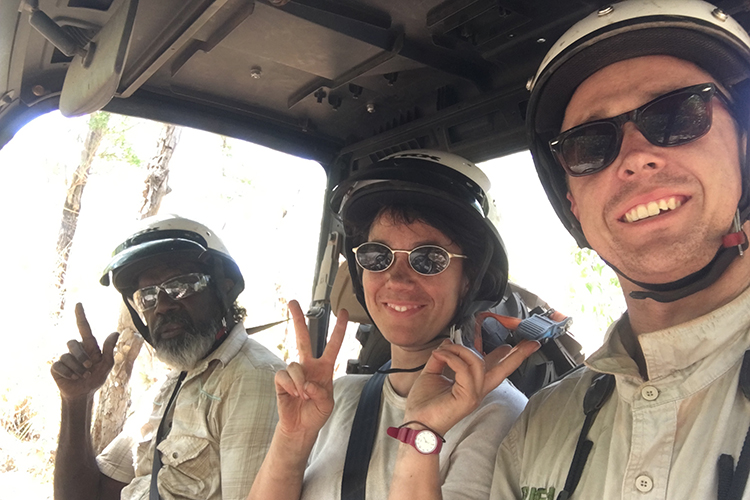
Harold Goodman, Laura Dreyfus and Robin Leppitt in an all-terrain vehicle en route to a survey site on the South Alligator River floodplain in Kakadu in October 2018. Image: Robin Leppitt
For further information
Robin Leppitt - robin.leppitt@cdu.edu.au
Top image: A male Alligator Rivers yellow chat. Image: Keith Lightbody
